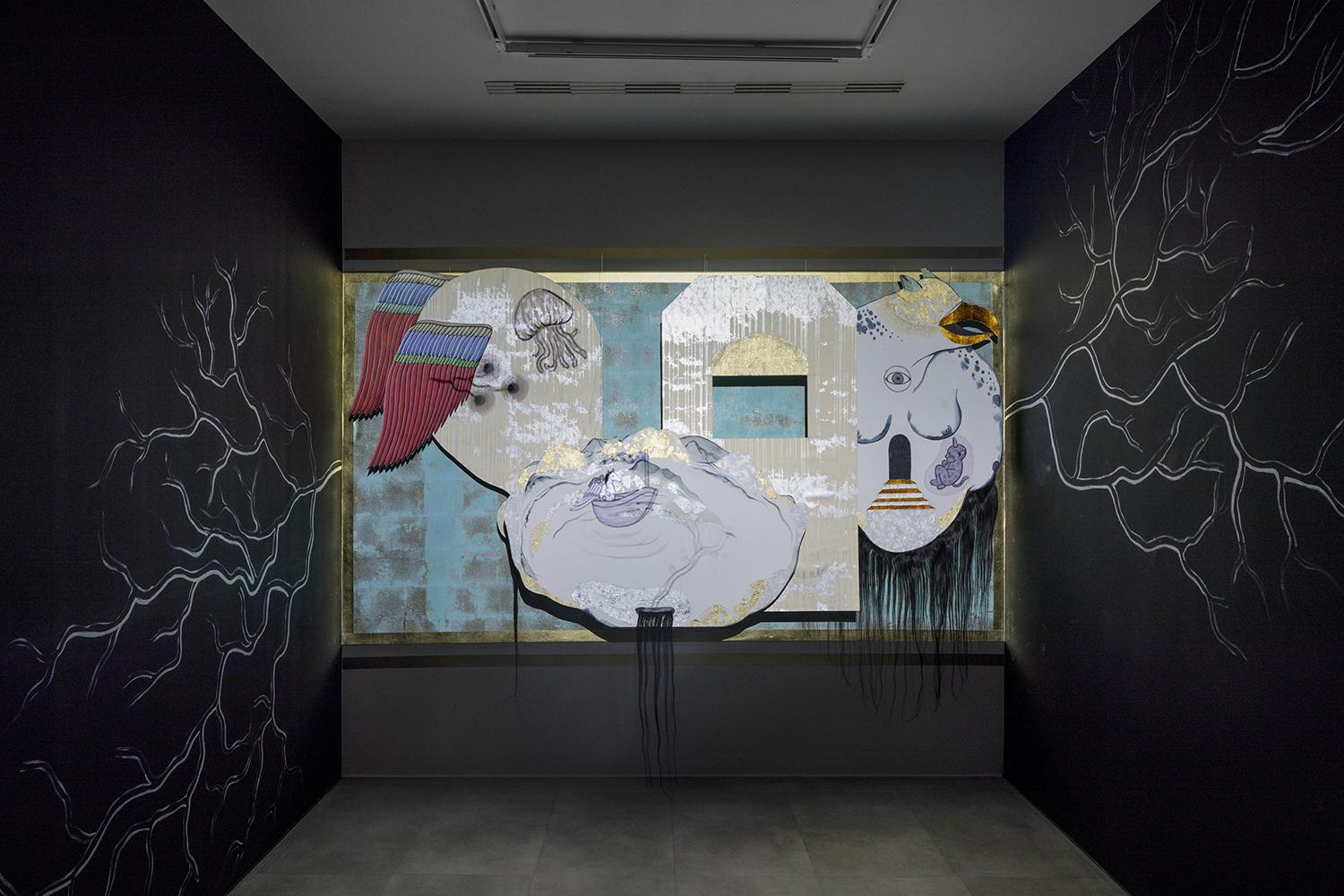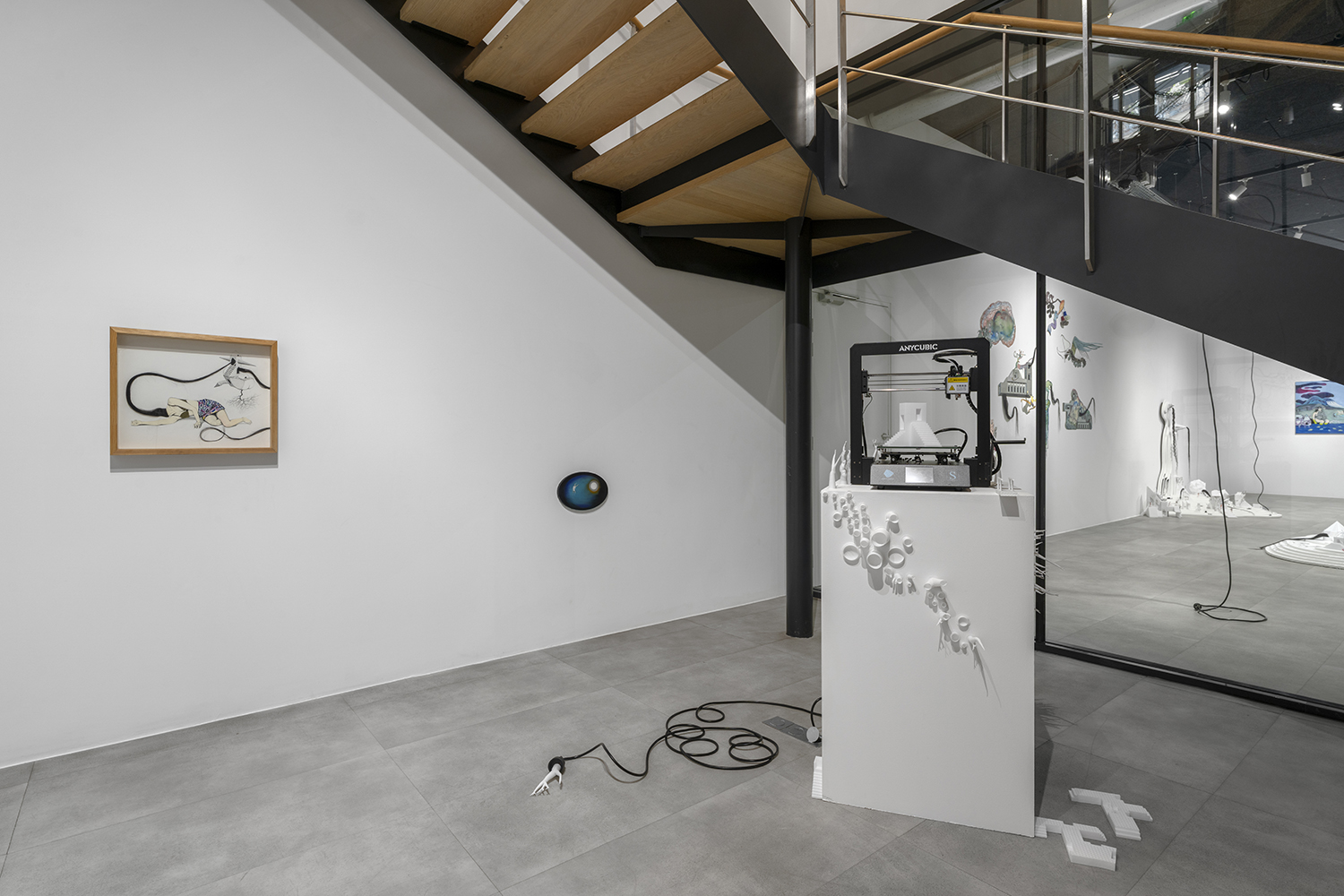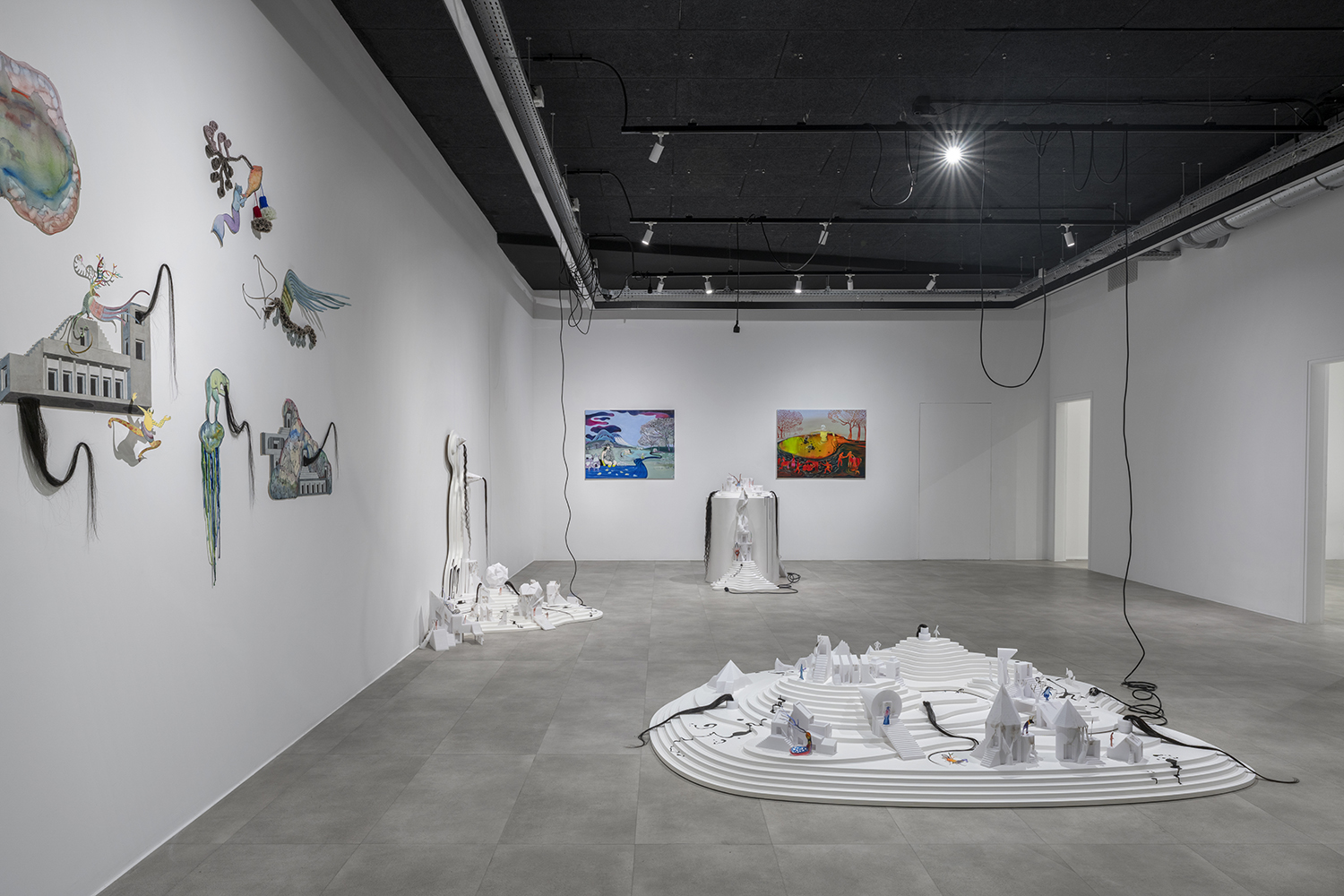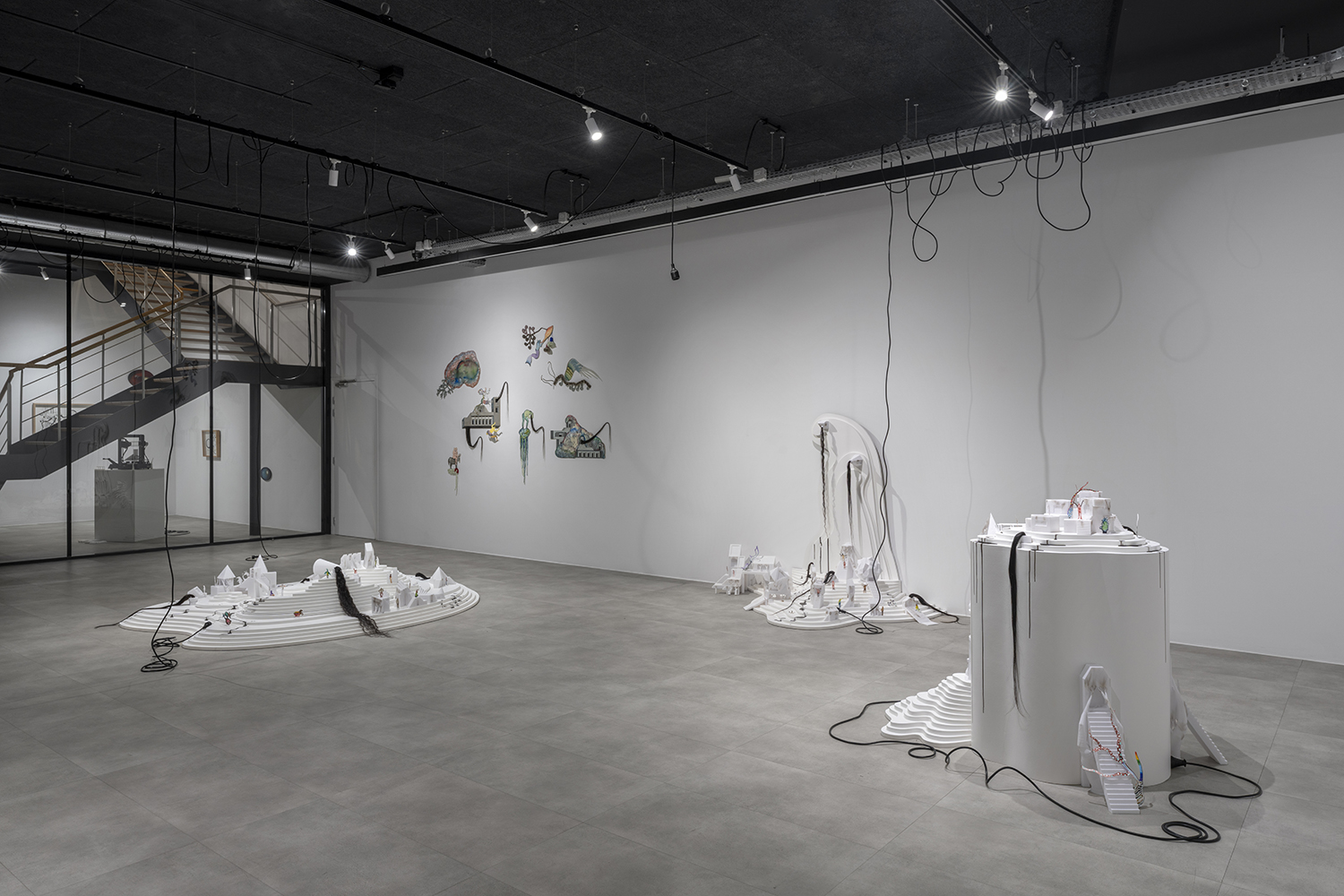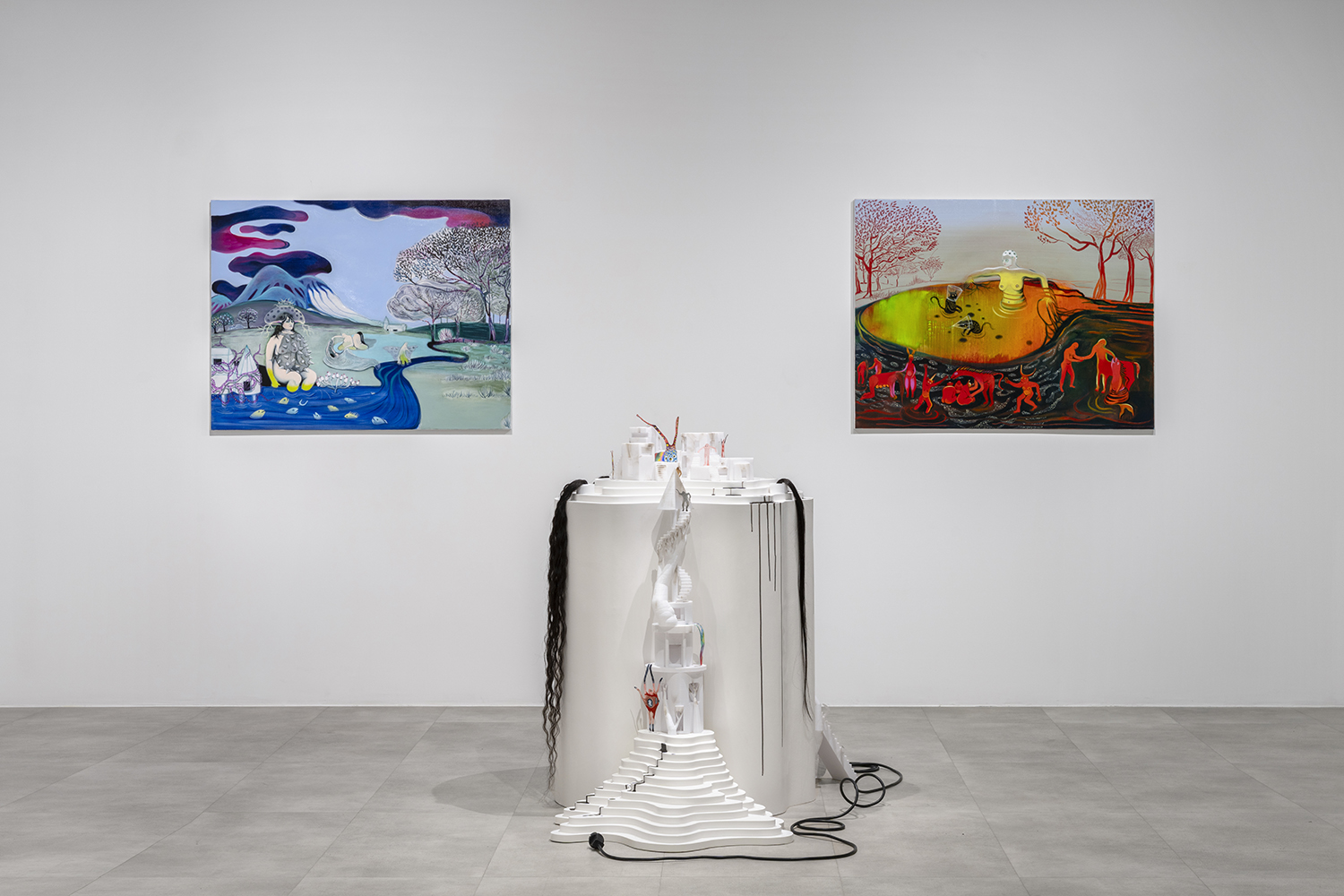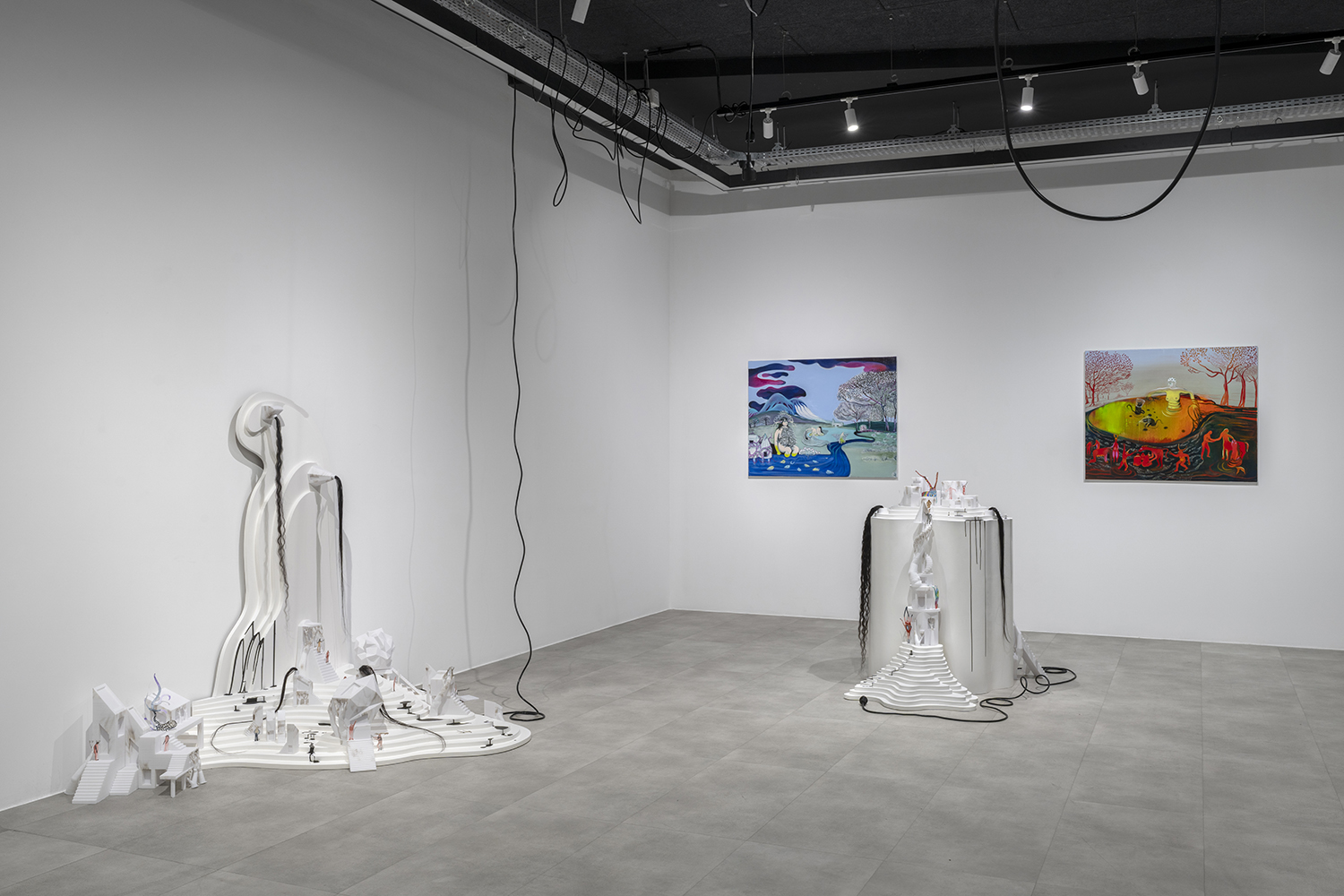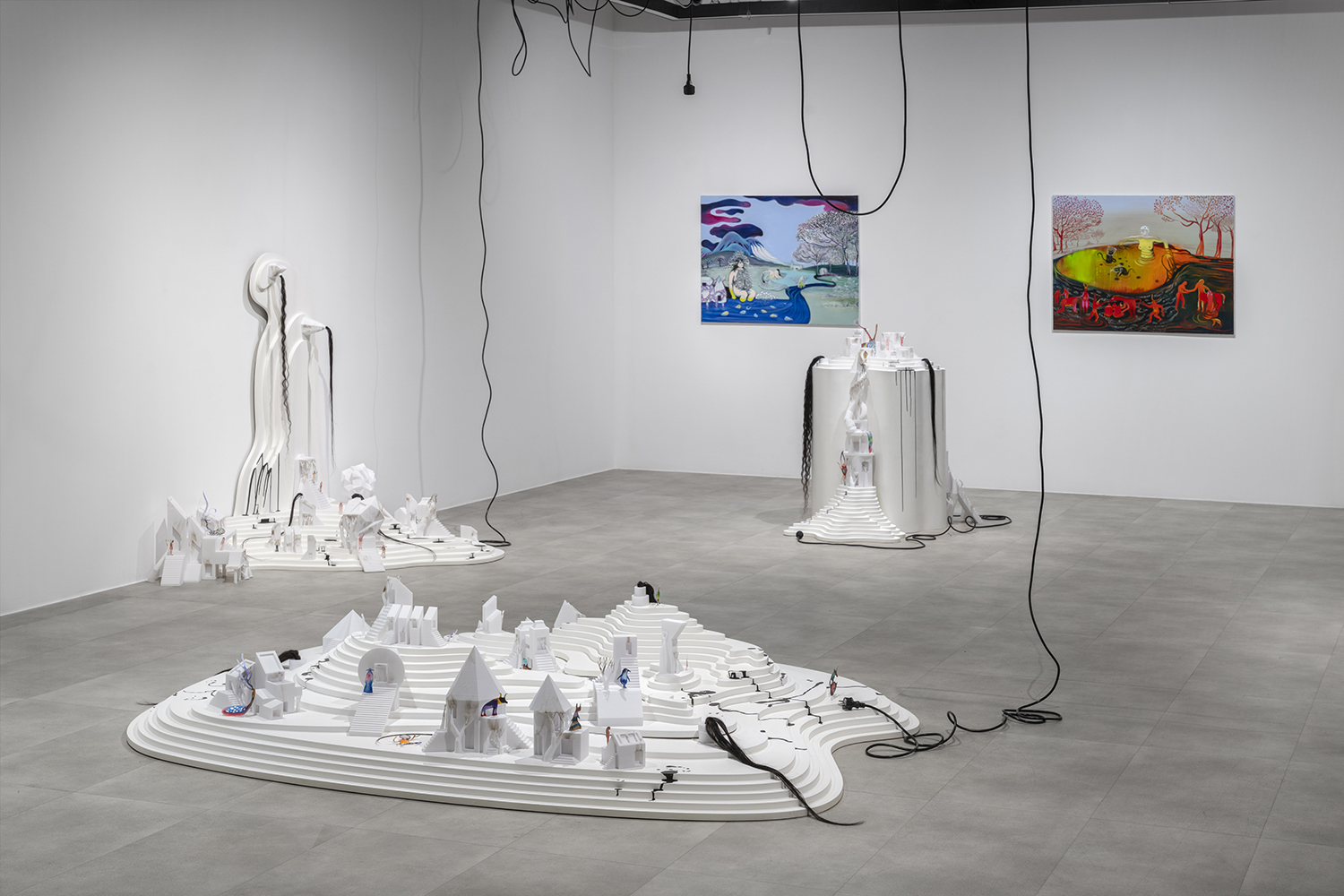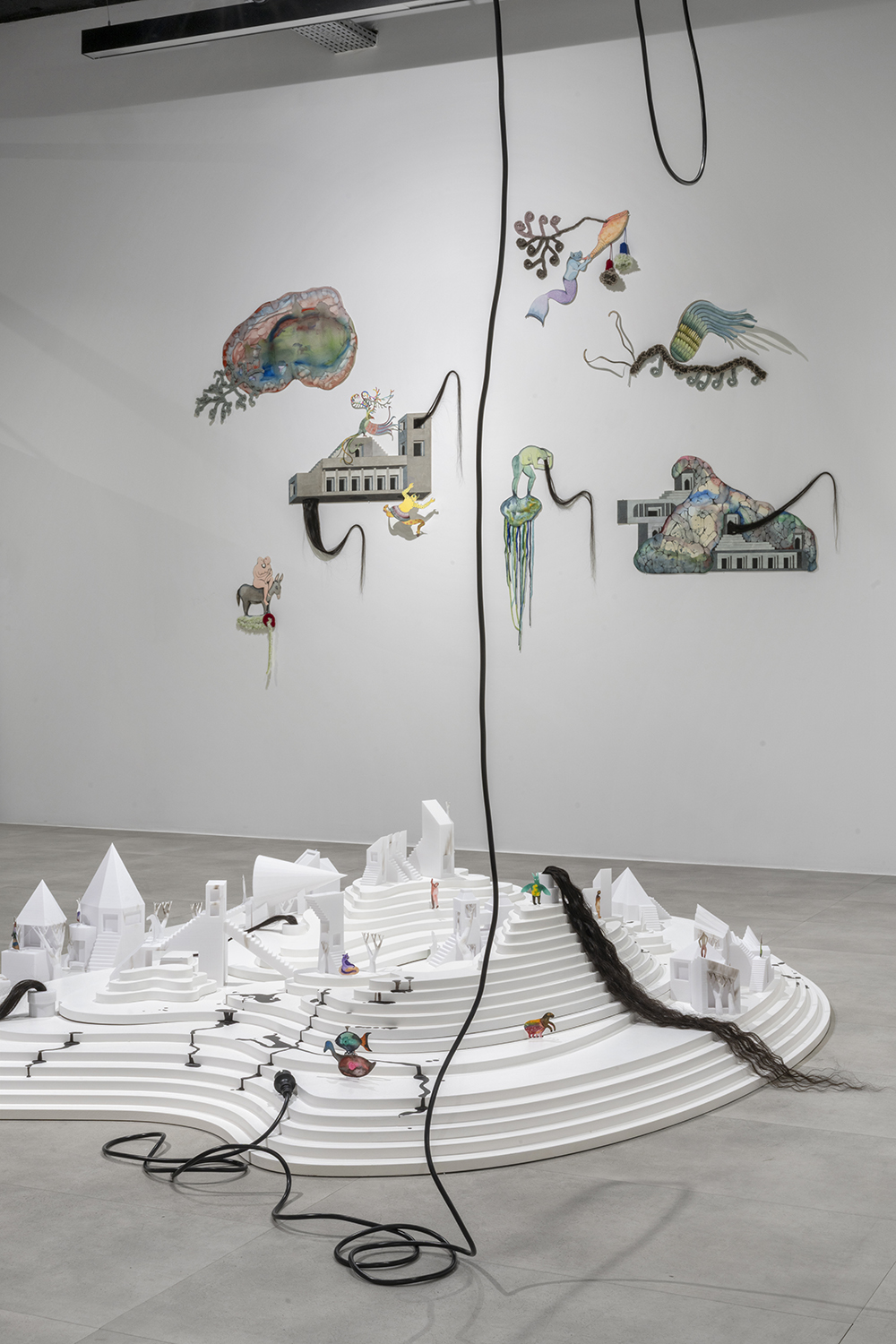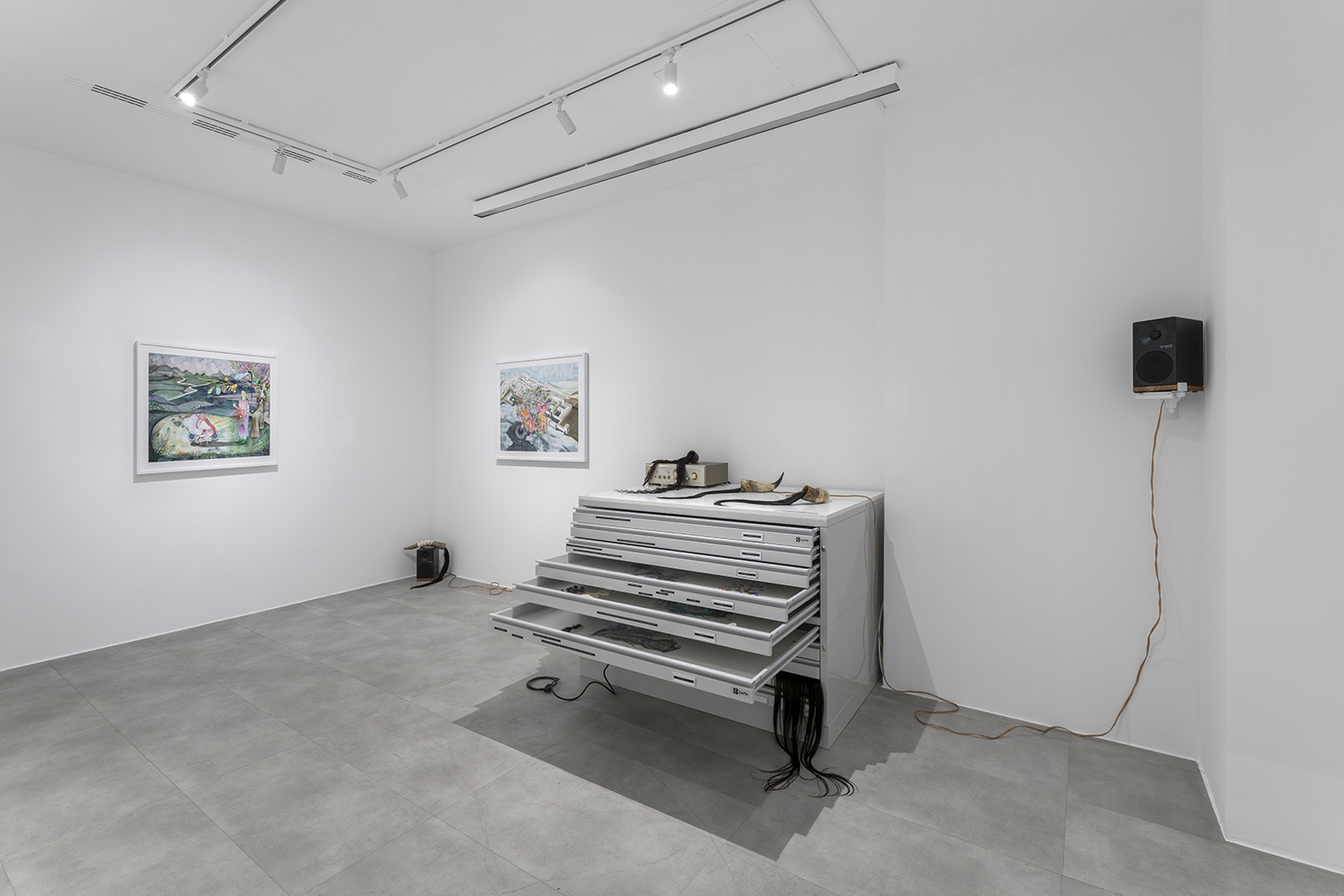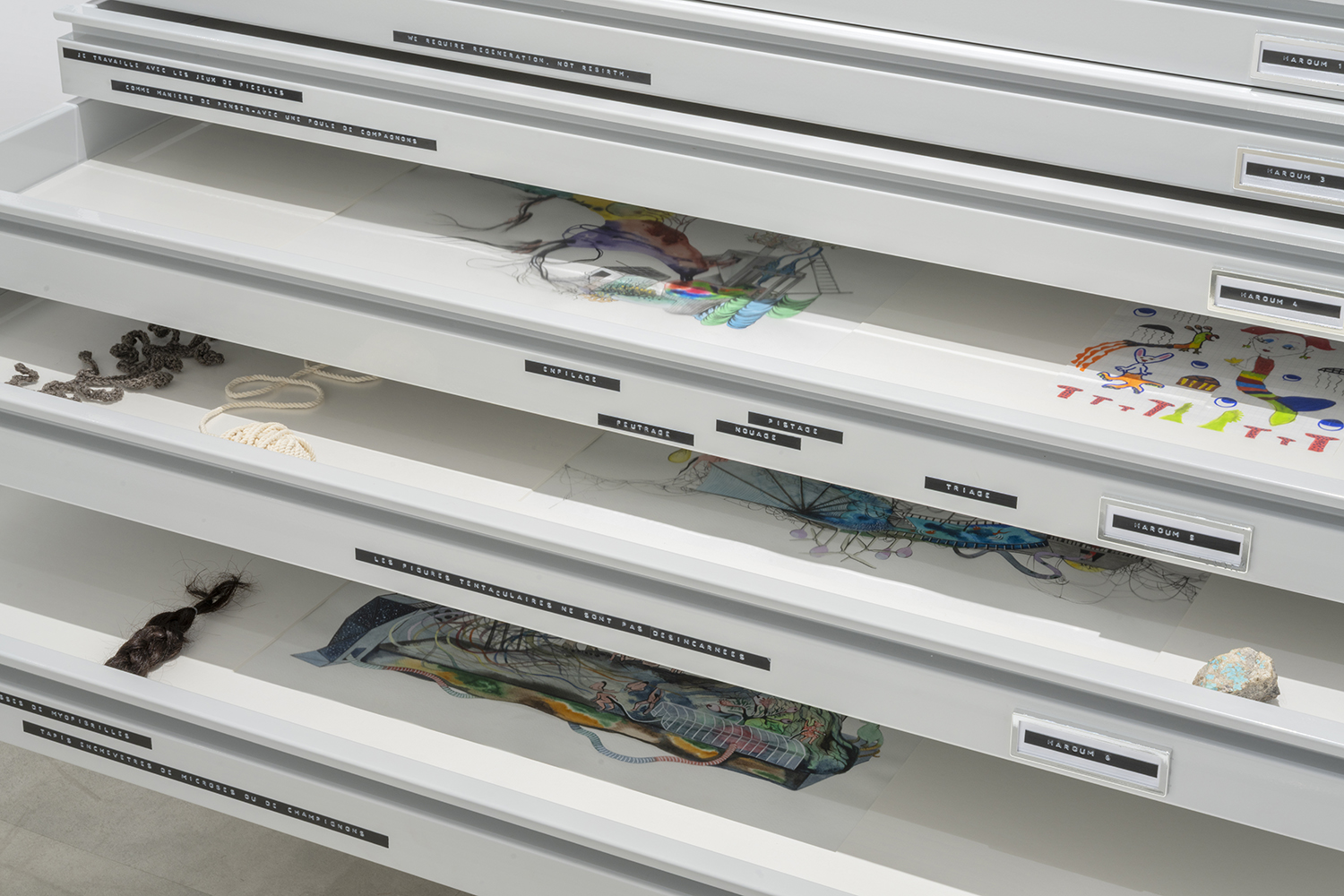October 17 - January 4, 2026
Elika Hedayat
Curated by Valentina Ulisse
"[...] practices of living and dying in rich worldings that I think of as string figure games"
Donna Haraway, Staying with the trouble
In several works of Persian literature written between the 10th and 12th centuries, Haroum is described as a city governed by learned women, who live in equality and peace with the environment. Free and independent, they seem to echo the Amazons, warrior women of Greco-Roman mythology, who became a symbol of female emancipation and gender equality.
In these ancient Persian epics, animals and imaginary creatures occupy a remarkable place and, in constant alliance with humans, help to blur existing boundaries between genders and species. Simorgh, for example, a long-lived bird with invaluable knowledge, is a central, metamorphic character, a creature neither feminine nor masculine.
To give shape to her own vision of Haroum, artist Elika Hedayat wanted to mix references as if in a "game of strings" made of twists and tangles, close to Donna Haraway's "speculative fabulation".
She has drawn as much on the mythical literature of her native Iran as on contemporary feminist and ecological science fiction, while taking as her foundation transdisciplinary scientific theories based on the idea of symbiosis that extends from the living to the technological.
Her fantastical storytelling never forgets the current situation and struggles of Iranian women today. These are constantly evoked by the artist through the use of black hair (living matter), plugs and cables (technological elements).
Slipping through space, these filaments that link and connect organisms and territories free themselves from constrictions and powers. They are cyborgs, presences-guides in the narrative. Their intervention is discreet but rhizomic: they are at the heart of the feminist and symbiotic cultural evolution of Haroum, which Elika Hedayat envisions as a city of the future.
The exhibition designed for the Drawing Lab is intended as a discovery of this world still under construction. In the artist's works, Haroum appears as a city-laboratory, in its embryonic state or at the model stage. Inspired by the work of Vinciane Despret and the animal ingenuity observed in therarchitecture, these elevations reveal an art of construction that is no longer solely human, but inter-species.
His habitant-x, mysterious, tentacular creatures, appear as much on wall drawings as in immersive, even "abyssal" installations. Here, the artist combines animated video with the tradition of Pardeh Kahni (curtain storytelling) - an ancient form of storytelling in Iran, where the storyteller reads and narrates epics depicted on painted canvases.
The archive format is also activated and made dynamic: the artist gives his own interpretation of history, fiction and science. Arborescent thoughts, in which forms of expression extend beyond human literary categories, constitute a collection of chronicles, materials, characters and voices at the origin of this contemporary interpretation of Haroum.
Using a variety of artistic techniques and experiments, Elika Hedayat interprets drawing in multiple forms, demonstrating the different ways in which it can be "set in motion".
Through a lineage of metamorphoses, the line of a sketch becomes the line of a digital model and finally the dynamic filament of a 3D print.
Through a process of hybridization, every form - subject and landscape - is constantly caught up in a to-and-fro of reciprocal conversions.
Through an interplay of translations, the writing transforms into an image, and then into an oral narrative.
Valentina Ulisse
Exhibition curator
#HAROUM

Elika Hedayat, Haroum #11, 2025, 66 x 74 cm, pencil and watercolor on paper.
Courtesy of the artist and Galerie Aline Vidal.
Press
Partners

The artist
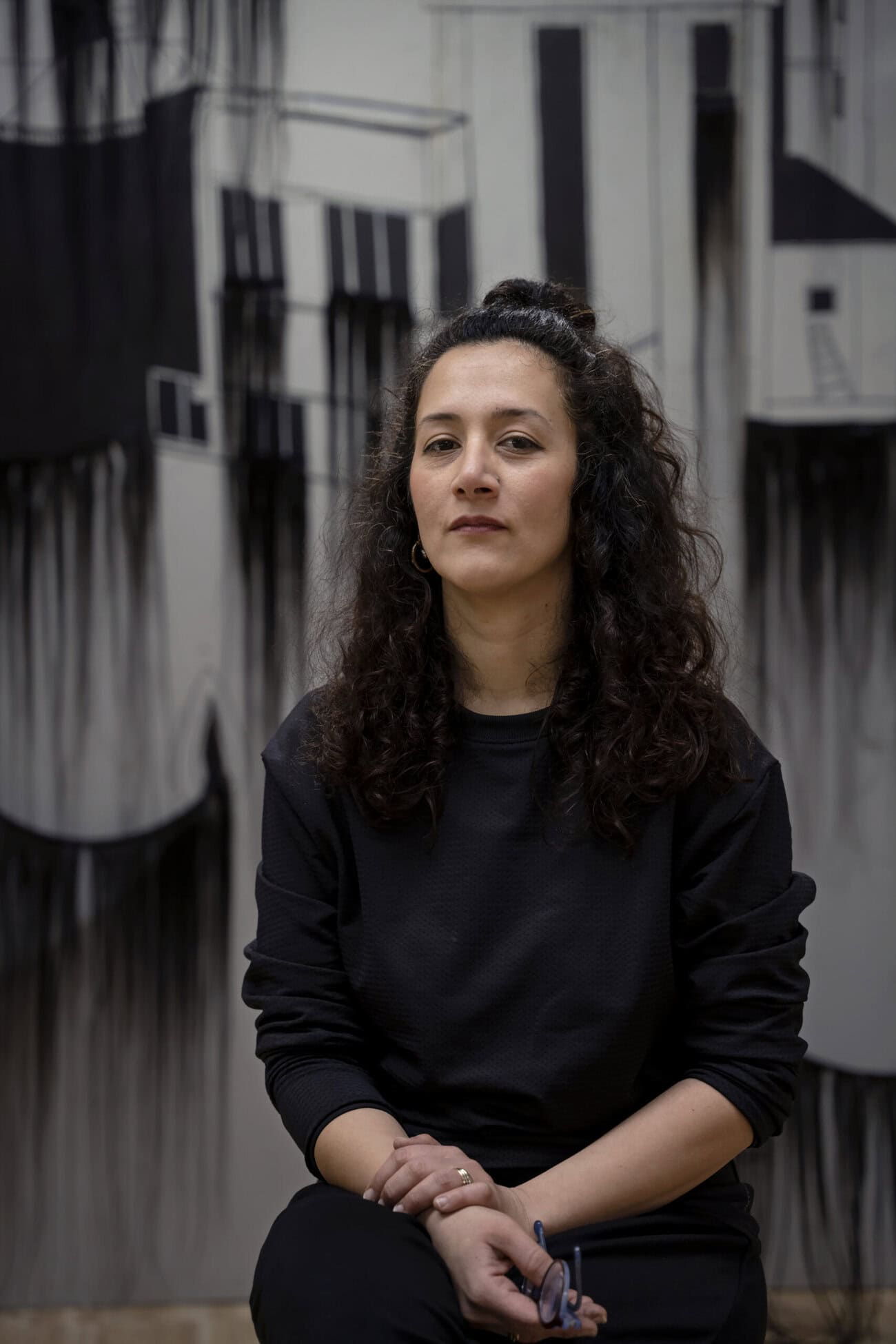
Ashkan Noroozkhani
Elika Hedayat
Born in Teheran (Iran) in 1979, lives and works in Paris
After studying visual communication at the Public University of Art in Teheran, she arrived in France in 2004. She was then admitted to Annette Messager's studio at the École Nationale Supérieure des Beaux-Arts in Paris, where she graduated with the Congratulations of the Jury in 2008. She then joined Le Fresnoy, the national studio for contemporary arts in Tourcoing. Her work has been shown in numerous solo and group exhibitions in France, Iran, the United States and South Korea, among others. His latest solo show, "Les dépossédés", was held in 2023 at the Centre d'Art de Malakoff, curated by Françoise Docquiert. His work has joined the collections of several private and public institutions, including FRAC Picardie, Fonds d'art contemporain - Paris Collections, CNAP and MAC VAL.
Elika Hedayat is represented in France by Galerie Aline Vidal (Paris).
In Elika Hedayat's work, reality, memory and imagination intertwine. All media - drawings, paintings, videos, films, installations, performances... - are mobilized to tell the story of a world in upheaval, where everyday life tumbles into dreams. Her work revisits historical references, which she transposes into the realm of personal experience or fiction. Her scenarios are populated by real-life and political references, fantastical landscapes and dreamlike characters, half-human, half-animal, half-plant, in constant metamorphosis.
The curator

Senda Studio
Valentina Ulisse
Born in Rome (Italy) in 1993, lives and works in Paris.
Valentina Ulisse is active in the fields of curating, research, writing and mediation. She trained in art history and curating at La Sapienza University (Rome) and the Sorbonne (Paris). She was associate curator for CAC Brétigny's 2023-2024 hors les murs season and assists gallery owner Aline Vidal, with whom she organized "De(s)rives", a curatorial project experimenting with the exhibition format outside traditional artistic contexts. Recently, she curated "La Mort, Le Mat, Le Monde", an exhibition inspired by the Marseilles Tarot, which opened the 2025 season at 6b (Saint-Denis).
She is a member of C-E-A, the French Association of Exhibition Curators.
In her curatorial work, Valentina Ulisse is inspired by narratives that reject the conventions imposed by our capitalist, Western-centric, patriarchal and heteronormative society. She investigates the creation of new contemporary fictions inspired by SFFF (science fiction, fantasy and fantastic), folklore, fable and legend.
